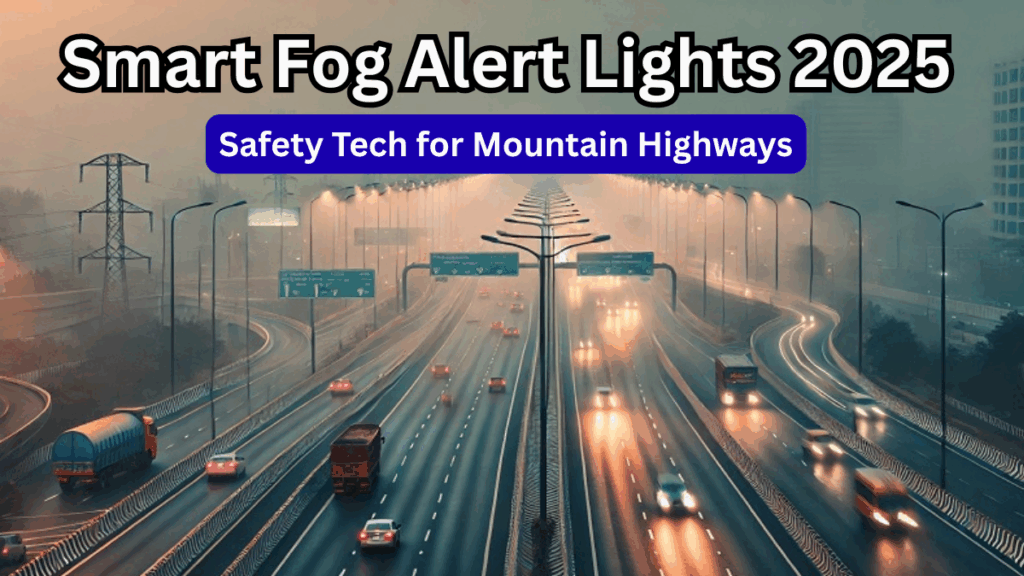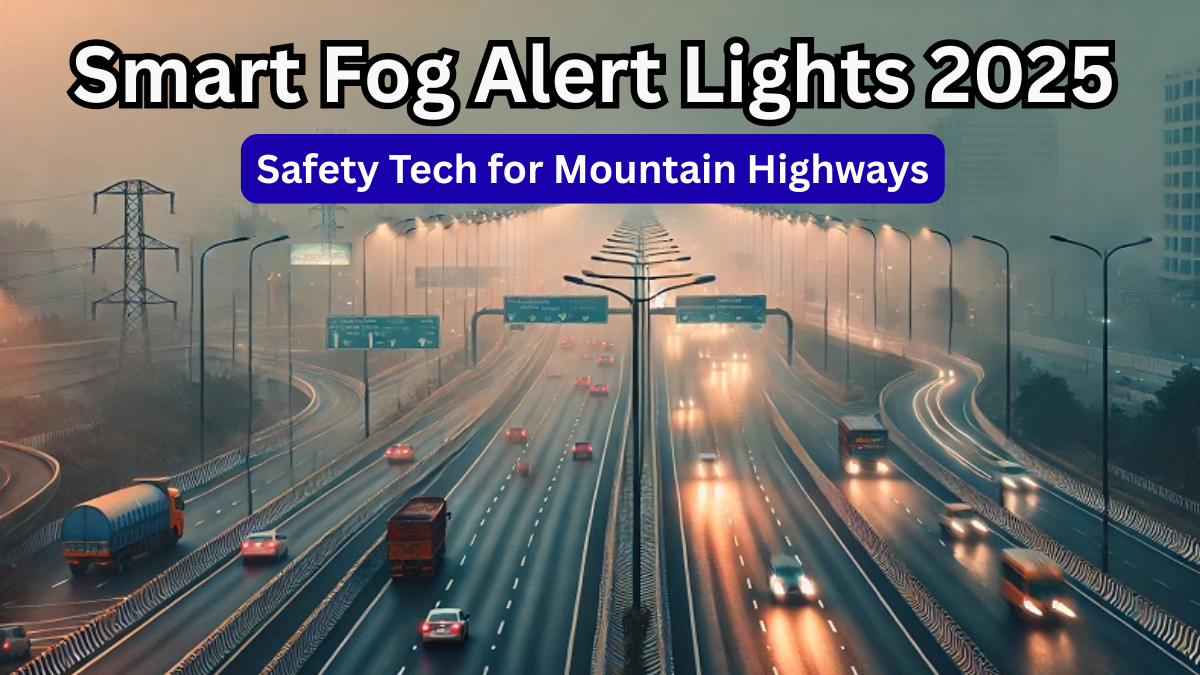Driving through mountainous regions can be challenging, especially when dense fog reduces visibility. In 2025, Smart Fog Alert Lights are emerging as a game-changer, combining technology and safety to make mountain highways safer for commuters. These innovative devices are part of the latest Highway Safety Tech solutions designed to prevent accidents and improve driving confidence.

What Are Smart Fog Alert Lights?
Smart Fog Alert Lights are intelligent lighting systems installed along fog-prone highways. Unlike conventional streetlights, these lights adapt to weather conditions, helping drivers navigate safely.
Key Features:
-
Automatic intensity adjustment based on fog density
-
LED lights for energy efficiency and long lifespan
-
Real-time alerts integrated with highway monitoring systems
-
Connectivity with GPS and traffic management apps
Benefits of Smart Fog Alert Lights on Mountain Highways
Implementing Smart Fog Alert Lights on mountain roads offers multiple advantages for drivers, authorities, and local communities:
-
Enhanced Visibility: Illuminates foggy stretches, reducing blind spots
-
Reduced Accidents: Alerts drivers of sudden turns or obstacles
-
Energy Efficient: Uses adaptive LED technology, saving power
-
Integration with Smart Traffic Systems: Works seamlessly with modern Highway Safety Tech infrastructure
How Smart Fog Alert Lights Work
The technology behind these lights is as impressive as their benefits. Here’s a simple breakdown:
| Component | Function |
|---|---|
| Sensors | Detect fog density and weather conditions |
| LED Lights | Adjust brightness automatically to enhance visibility |
| Traffic Management System | Sends real-time alerts to drivers and highway authorities |
| Connectivity Module | Integrates with GPS and mobile apps for dynamic navigation support |
These systems communicate with nearby vehicles, sending alerts to drivers through dashboards or mobile apps, creating a smart ecosystem that reduces the risk of accidents.
Real-Life Applications
Several mountainous regions worldwide are already implementing Smart Fog Alert Lights as part of their safety measures:
-
Himalayan Highways, India: Pilot projects on high-risk stretches
-
Rocky Mountain Passes, USA: Integrated with GPS alerts for tourist routes
-
Alpine Roads, Europe: Uses adaptive lights to warn drivers during sudden fog
These examples demonstrate how Highway Safety Tech is evolving to meet modern road safety needs.
Future of Highway Safety Tech
With rising vehicle traffic and climate unpredictability, investing in Smart Fog Alert Lights is becoming essential for highway authorities. Future developments include:
-
AI-powered prediction of fog formation
-
Vehicle-to-infrastructure (V2I) communication for instant alerts
-
Renewable energy-powered lighting solutions
-
Integration with autonomous driving systems
FAQs
Q1: How do Smart Fog Alert Lights differ from regular streetlights?
A: Unlike traditional streetlights, they adjust brightness according to fog density, provide real-time alerts, and connect with traffic systems to enhance safety.
Q2: Can these lights be installed on all highways?
A: They are most effective on fog-prone and mountainous highways but can be adapted for urban areas prone to low visibility.
Q3: Do Smart Fog Alert Lights require high maintenance?
A: Minimal maintenance is needed due to LED technology and automated systems, making them cost-effective long-term.
Q4: Will Smart Fog Alert Lights work with autonomous vehicles?
A: Yes, they are being integrated with autonomous driving systems and GPS navigation to improve safety and route management.
In Summary
The rise of Smart Fog Alert Lights marks a significant leap in Highway Safety Tech, especially for mountainous regions. These intelligent systems not only save lives but also demonstrate how innovation can make our roads smarter and safer. Investing in such technology in 2025 and beyond is crucial for modern highway management and accident prevention.
Click here to learn more
